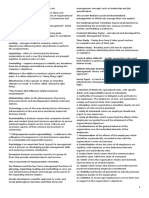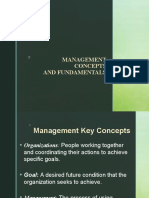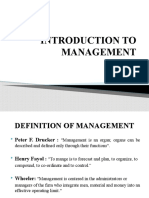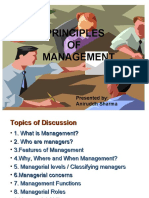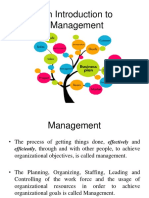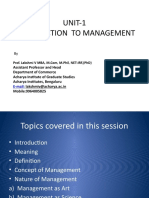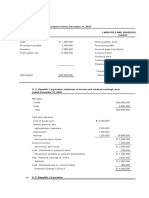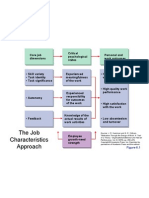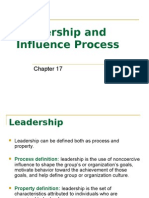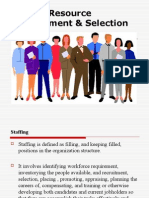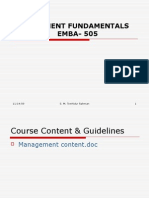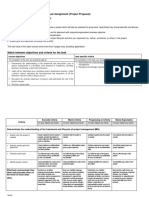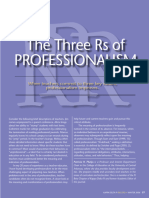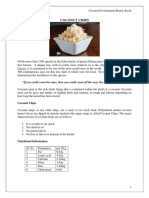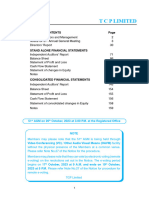0% found this document useful (0 votes)
201 views7 pagesOrganization: A Group of People Working Together in A Structured and Coordinated
This document provides an overview of management as an academic discipline. It defines management as a set of activities including planning, organizing, leading, and controlling resources to achieve organizational goals efficiently and effectively. The document outlines classical perspectives on management including scientific management and administrative management. It also discusses the managerial roles of planning, organizing, leading, and controlling. Additionally, it covers the different levels and areas of management as well as managerial skills.
Uploaded by
tanvir09Copyright
© Attribution Non-Commercial (BY-NC)
We take content rights seriously. If you suspect this is your content, claim it here.
Available Formats
Download as PDF, TXT or read online on Scribd
0% found this document useful (0 votes)
201 views7 pagesOrganization: A Group of People Working Together in A Structured and Coordinated
This document provides an overview of management as an academic discipline. It defines management as a set of activities including planning, organizing, leading, and controlling resources to achieve organizational goals efficiently and effectively. The document outlines classical perspectives on management including scientific management and administrative management. It also discusses the managerial roles of planning, organizing, leading, and controlling. Additionally, it covers the different levels and areas of management as well as managerial skills.
Uploaded by
tanvir09Copyright
© Attribution Non-Commercial (BY-NC)
We take content rights seriously. If you suspect this is your content, claim it here.
Available Formats
Download as PDF, TXT or read online on Scribd
/ 7




